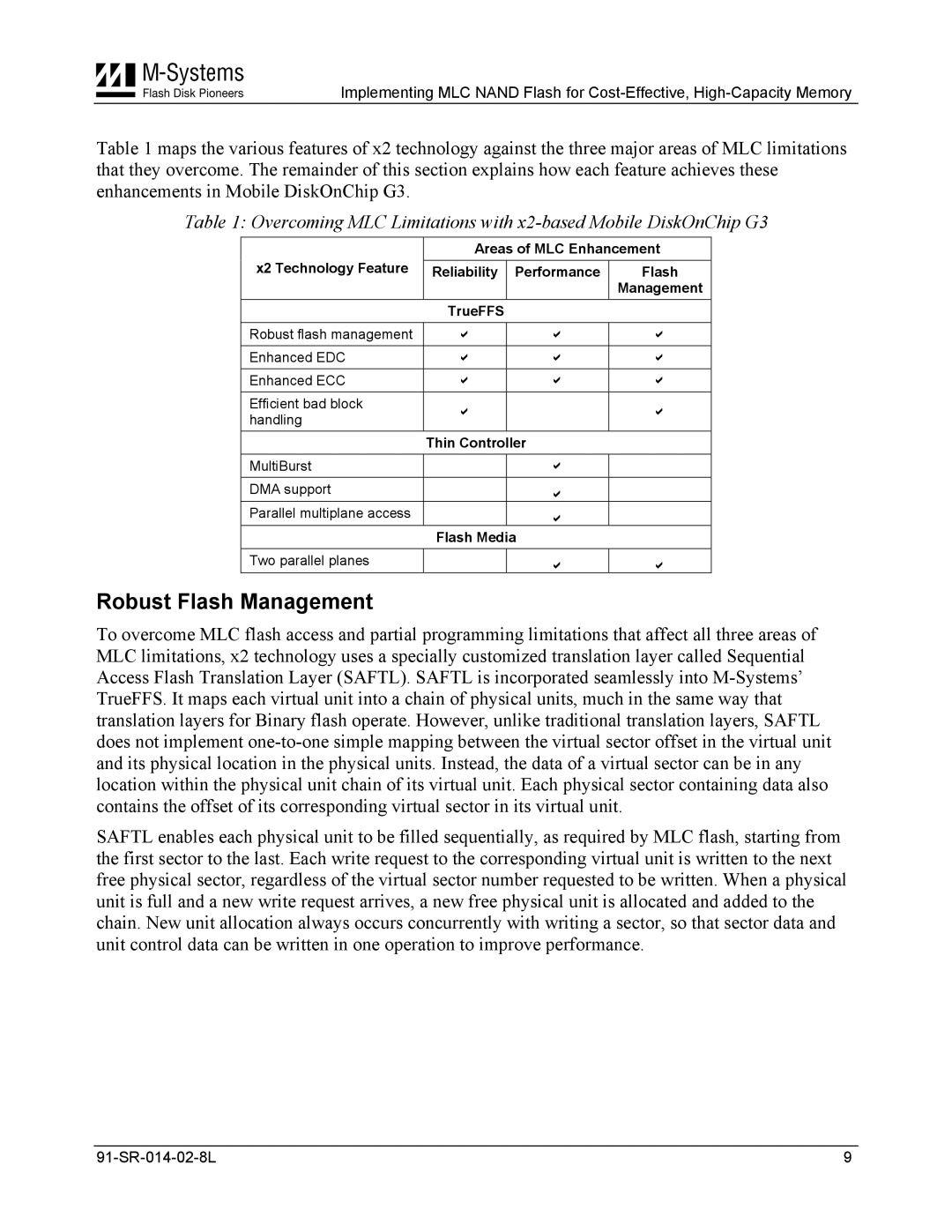
Implementing MLC NAND Flash for
Table 1 maps the various features of x2 technology against the three major areas of MLC limitations that they overcome. The remainder of this section explains how each feature achieves these enhancements in Mobile DiskOnChip G3.
Table 1: Overcoming MLC Limitations with
x2 Technology Feature | Areas of MLC Enhancement | ||
Reliability | Performance | Flash | |
|
|
| Management |
| TrueFFS |
|
|
Robust flash management | a | a | a |
Enhanced EDC | a | a | a |
|
|
|
|
Enhanced ECC | a | a | a |
|
|
|
|
Efficient bad block | a |
| a |
handling |
| ||
|
|
| |
| Thin Controller |
| |
MultiBurst |
| a |
|
|
|
|
|
DMA support |
| a |
|
Parallel multiplane access |
| a |
|
| Flash Media |
| |
Two parallel planes |
| a | a |
Robust Flash Management
To overcome MLC flash access and partial programming limitations that affect all three areas of MLC limitations, x2 technology uses a specially customized translation layer called Sequential Access Flash Translation Layer (SAFTL). SAFTL is incorporated seamlessly into
SAFTL enables each physical unit to be filled sequentially, as required by MLC flash, starting from the first sector to the last. Each write request to the corresponding virtual unit is written to the next free physical sector, regardless of the virtual sector number requested to be written. When a physical unit is full and a new write request arrives, a new free physical unit is allocated and added to the chain. New unit allocation always occurs concurrently with writing a sector, so that sector data and unit control data can be written in one operation to improve performance.
9 |
